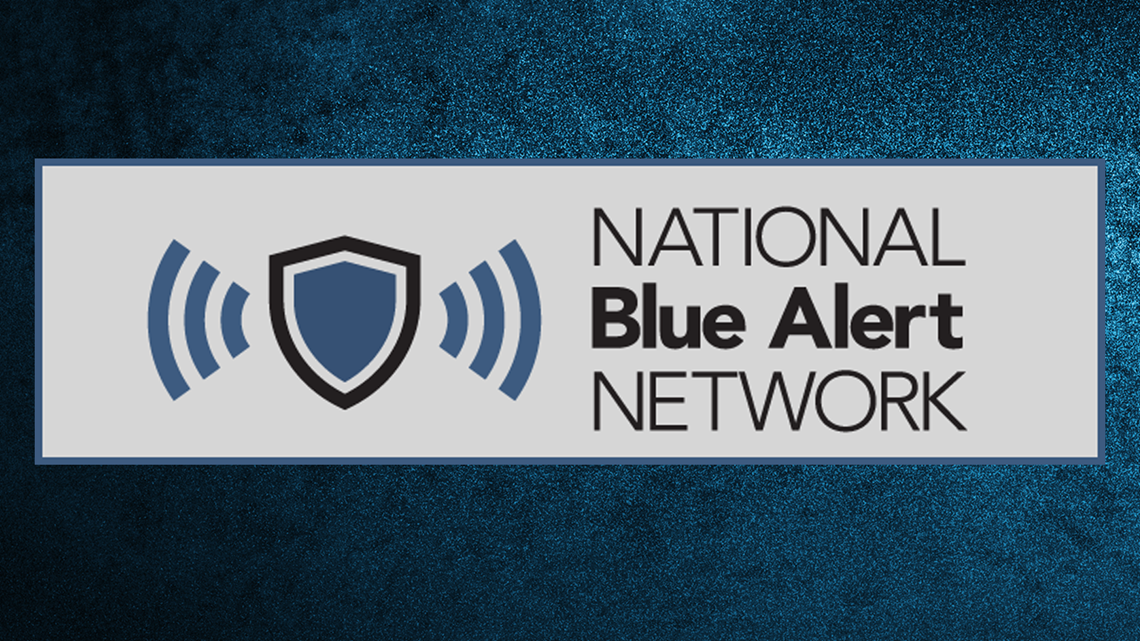CHARLOTTE, N.C. — When a "Civil Emergency Message" appeared as a crawling ticker across television sets Monday, a spike in Google searches from people inquiring about the vague broadcast message followed.
Depending on your cable or satellite provider, the text may have simply said a "Civil Emergency Message" had been issued by a "Civil Authority" across North Carolina. It may have even been aired on some radio stations. In some broadcast forms, the message did not provide an explanation or details.
The alert was issued by the North Carolina Department of Public Safety at the request of the Forest City Police Department in Rutherford County. The alert is referred to as a "Blue Alert."
"The purpose of the Blue Alert Program is to establish a quick response system designed to issue and coordinate alerts following a violent attack upon a law enforcement officer," the state website for the program explains. "The goal of a Blue Alert is to provide immediate information to the public about violent suspects via media broadcasts, and other notification resources to solicit help from the public in the safe and swift apprehension of the suspect."
Monday's alert was the result of the Forest City Police Department searching for an "armed and dangerous" suspect wanted for shooting a police officer Monday morning.
Further Blue Alert details published online by the state provided a name, description, and information about the suspect.
At 4:15 p.m., the Rutherford County Sheriff's Office posted to Facebook to announce the suspect had been taken into custody.
Around 8:30 a.m., the suspect is accused of shooting and critically injuring Senior Officer Jamie Hill, NBC affiliate WYFF-TV reported. The officer is being treated at Spartanburg Regional Health but the extent of his injuries was not immediately known publicly.


History of the Blue Alert program in North Carolina
Named in honor of Rafael Ramos and Wenjian Liu of the New York City Police Department, who were killed in an ambush attack on December 20, 2014, the program was signed into law by President Barack Obama on May 19, 2015, according to the NC Blue Alert website. North Carolina Governor Pat McCrory signed the Blue Alert Notification System into state law on July 11, 2016.
North Carolina is one of 35 states with a Blue Alert Program, according to the Department of Justice.
What are the criteria for a North Carolina Blue Alert
According to the state website, here are the requirements for a Blue Alert in North Carolina.
All of the following statutory criteria ( NC G.S. 143B–1023) must be met before the NC Center for Missing Persons will activate a Blue Alert.
A law enforcement officer is killed or suffers serious bodily injury. Under NC G.S. 14-32.4(a), serious bodily injury is defined as bodily injury that creates a substantial risk of death, or that causes serious permanent disfigurement, coma, a permanent or protracted condition that causes extreme pain, or permanent or protracted loss or impairment of the function of any bodily member or organ, or that results in prolonged hospitalization.
A law enforcement agency with jurisdiction determines that the suspect poses a threat to the public and other law enforcement personnel and possesses information that may assist in locating the suspect, including information regarding the suspect's vehicle, complete or partial license plate information, and a detailed description of the suspect, or that a law enforcement officer is missing while on duty under circumstances warranting concern for the law enforcement officer's safety.
The head of a law enforcement agency with jurisdiction recommends the issuance of a blue alert to the Center.
The North Carolina Center for Missing Persons is the only agency that can activate an Blue Alert and will do so ONLY at the request of an investigating law enforcement agency head. It is then the responsibility of the Center to determine whether there is sufficient identifying data to justify Blue Alert activation. For instance, there must be sufficient descriptive data on the suspect and/or suspect's vehicle for the public to be on the lookout for something. It does no good to activate an Blue Alert if sufficient information can't be provided to the public.
What are other types of alerts?
Blue Alerts are different than Silver Alerts, which are issued for a missing person who is believed to be suffering a cognitive disability, and has been formally reported as missing.
Amber Alerts are issued for children under the age of 17 who are believed to have been abducted.
Alerts are sometimes relayed by the National Weather Service or the Emergency Alert System, but are unrelated to severe weather alerts from NWS.
Flashpoint is a weekly in-depth look at politics in Charlotte, North Carolina, South Carolina, and beyond with host Ben Thompson. Listen to the podcast weekly.
SUBSCRIBE: Apple Podcasts || Spotify || Stitcher || Google Podcasts
All of WCNC Charlotte's podcasts are free and available for both streaming and download. You can listen now on Android, iPhone, Amazon, and other internet-connected devices. Join us from North Carolina, South Carolina, or on the go anywhere.



